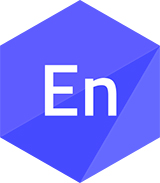Grafen-förbättrad värmespridare för elektronik
Syfte och mål
Detta projekt kommer att demonstrera grafen-förstärkt värmespridare för att möta efterfrågan på mer effektiva kylsystem i nästa generations elektronik, särskilt inom mobil elektronik, kommunikationsteknik och infrastruktur. Cirka 30 % av volymen i nuvarande helt aluminiumbaserade värmespridare kommer att ersättas med en tunnare grafenbeläggning (endast 10 % volym).
På grund av att grafen har hög värmeledningsförmåga och låg massdensitet, kommer de nya värmespridarna att ha en viktminskning på minst 20 % och en ökad termisk verkningsgrad med ungefär 40 %. Med tanke på den breda spridningen och den enorma marknaden för mobil elektronik och kommunikationsteknik, kommer lättare och effektivare värmespridare skapa betydande samhälleliga fördelar och ekonomiska värden.
Upplägg och genomförande
De tre parterna Kungliga Tekniska Högskolan (KTH), Huawei Technologies Sweden AB och Aninkco AB, kommer att gemensamt utveckla en 3D-teknik för att tillverka grafenbeläggningar på ett effektivt, skalbart och kostnadseffektivt sätt.
- Aninkco ska tillverka miljövänliga grafenbläck i stor skala.
- KTH ska skriva ut grafenfilmer i en unik 3D-struktur för att göra det bästa av grafenets höga värmeledningsförmåga.
- Huawei kommer att göra systematiska datorsimuleringar för att optimera 3D-strukturen och vägleda tillverkningen samt formulera testprotokoll för att karakterisera de slutliga komponenterna.
Resultat
I praktiken har vi lyckats tillverka tjocka (~ 200 mikron tjocklek) grafenbeläggningar på tunnare aluminiumsubstrat och genomfört jämförande test för att kontrollera att när 30% aluminium ersätts av en grafenbeläggning (9,6% vikt av den ursprungliga värmespridaren). Det erhållna grafenbelagda provet (20,4% lättare) uppnår nästan samma värmeledningsförmåga som de ursprungliga rena aluminiumproven. Denna forskning validerar experimentellt den utmärkta termiska prestanda hos grafenbeläggningar. Den lätta lösningen har stor potential för branschapplikationer, särskilt termisk hantering för elektronik.
Jämfört med aluminium har grafenfilmer åtminstone flera gånger högre värmeledningsförmåga medan deras massatäthet är ungefär hälften av aluminium. Dessa meriter erbjuder goda möjligheter för detta projekt att utveckla den lätta lösningen. Men i praktiken är det utmanande att tillverka tjocka grafenbeläggningar. Och aluminiumsubstraten förhindrar också användning av hög glödgningstemperatur (> 2000 oC) för att optimera värmeledningsförmågan som i fristående grafenfilmer. För att lösa dessa problem formulerade vi stabila bläck med hög koncentration av orörd grafen (elektrokemiskt exfolierad grafen med få skikt, som kännetecknas av SEM och Raman) för att tillverka tjocka beläggningar via gjutning med flera passager och erhålla hög konduktivitet vid medium glödgningstemperatur.
Emellertid behövs ofta höghastighetsbeläggningsprocess på icke-plan yta för industritillämpningar. Med stöd av SIP LIGHTer har vi genomfört ett uppföljningsprojekt för att utveckla skalbar sprutprocess för grafenbeläggningar på icke-plan yta för att driva grafenbeläggningen vidare mot industrialisering. Lab-to-fab-övergången kräver också tillförlitliga leverantörer av grafen av hög kvalitet och till låg kostnad. Olika kommersiella grafen utforskas i vår nya process. Vi söker också lämpliga grafenleverantörer som nya partners.



